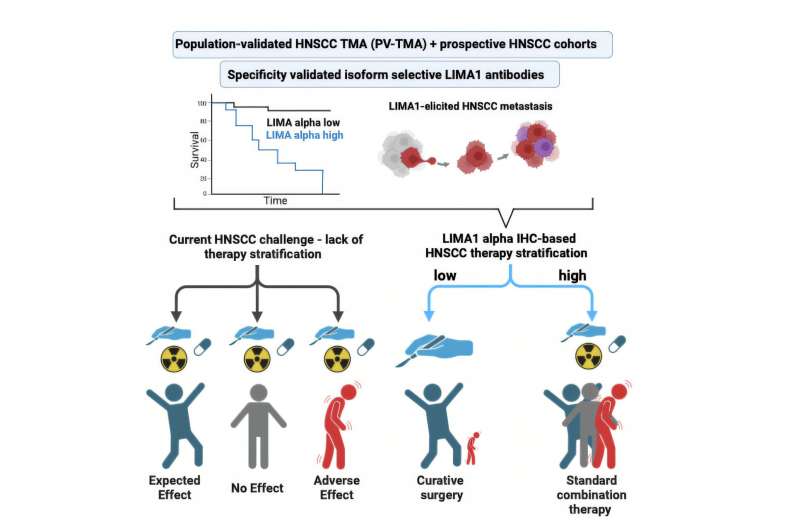Their study, recently published in EMBO Molecular Medicine, introduces an easy-to-use immunohistochemical assay for detecting the LIMA1-alpha protein, which reliably predicts whether patients can be cured with surgery alone—avoiding the need for harmful oncological treatments.
Surgery remains a cornerstone in the treatment of solid tumors, including head and neck squamous cell carcinoma. However, there has been no clinically available method to distinguish patients who can safely avoid additional therapies such as radiation or chemotherapy. These treatments can cause substantial side effects, additional costs and reduce quality of life.
The research team’s main findings included analyzing patients with newly diagnosed head and neck squamous cell carcinoma at all five university hospitals in Finland in a prospective clinical study. They found that high expression of the LIMA1-alpha isoform predicted poor survival following surgery, while patients with LIMA1-negative tumors had excellent outcomes without requiring further therapy. Strikingly, none of the LIMA1-negative patients in the prospective validation cohorts died of head and neck squamous cell carcinoma during the two-year follow-up.

